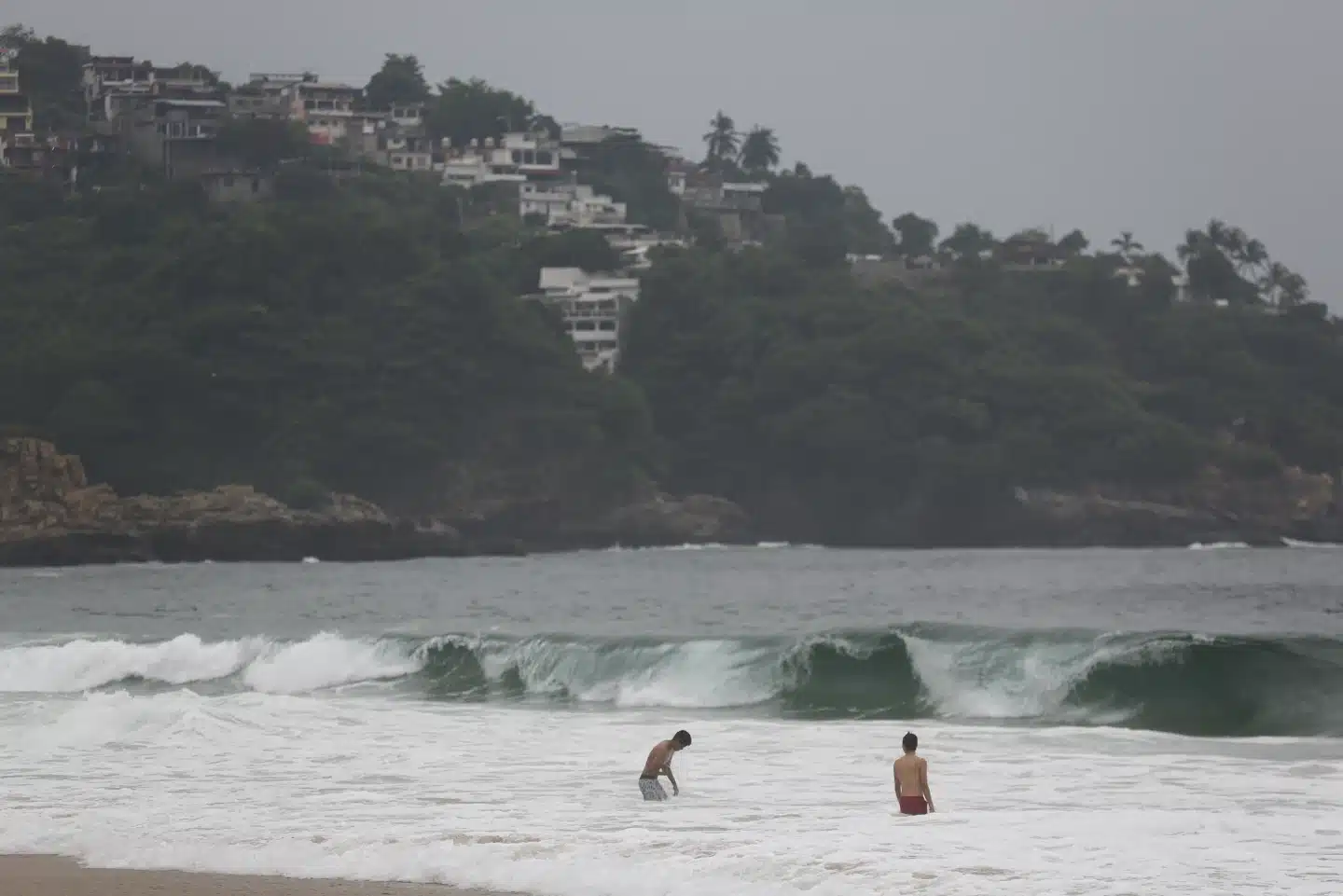U.K News
Hurricane Otis Now A Catastrophic Category 5 Storm Off Mexico’s Pacific Coast Nearing Acapulco

ACAPULCO, MX — Residents of Mexico’s once-glamorous resort of Acapulco and nearby coastal villages waited for the arrival of “potentially catastrophic” Hurricane Otis, a quickly strengthening Category 5 hurricane that brought up memories of a 1997 storm that killed dozens.
“A nightmare scenario is unfolding this evening for southern Mexico with rapidly intensifying Otis approaching the coastline,” a National Hurricane Centre forecaster said late Tuesday.
Hurricane Otis grew from a tropical storm to a Category 5 hurricane in 12 hours as it reached Mexico’s southern Pacific coast on Tuesday.
The National Hurricane Centre in the United States reported that Otis had maximum sustained winds of 160 mph (260 kph) late Tuesday evening and was projected to land near Acapulco early Wednesday. It was located around 55 miles (90 km) south-southeast of Acapulco and traveled north-northwest at 9 miles per hour (15 kilometers per hour).
Acapulco is a metropolis of about one million inhabitants at the base of rugged mountains. Luxury houses and slums coexist on the city’s hillside vistas of the glittering Pacific.
Hurricane Otis Now A Catastrophic Category 5 Storm Off Mexico’s Pacific Coast, Nearing Acapulco
While it once drew Hollywood stars for its nightlife, sport fishing, and cliff diving shows, Acapulco has fallen victim to competing organized crime groups, which have sunk the city into violence, driving many international tourists to the Caribbean waters of Cancun and the Riviera Maya, or hippie beaches further down the Pacific coast in Oaxaca.
From Punta Maldonado to Zihuatanejo, a hurricane warning was in place. A hurricane warning is in force from Lagunas de Chacahua to Punta Maldonado.
Otis was expected to stay a Category 5 hurricane until landfall, but it is expected to diminish quickly due to Mexico’s higher topography. On Wednesday night, Otis will very likely fade over southern Mexico.
“This is an extremely serious situation for the Acapulco metropolitan area with the core of the destructive hurricane likely to come near or over that large city early on Wednesday,” the National Hurricane Centre stated. “There are no hurricanes on record even close to this intensity for this part of Mexico.”
People in Acapulco rushed home as rain began to fall and winds increased, pushing tourists away from the beach.
The Guerrero state administration said it was constructing 396 shelters in case families were forced to flee their houses due to wind damage or rising seas.
“We’re on maximum alert,” Acapulco Mayor Abelina López said Tuesday night, urging residents to stay home or seek shelter. She believes Otis will be much more deadly than Hurricane Pauline, which devastated Acapulco in 1997 and killed over 200 people. Hundreds more were injured as a result of flooding and mudslides.
President Andrés Manuel López Obrador advised citizens to “go to shelters, stay in safe places away from rivers, streams, ravines, and be alert, without being overconfident” via the platform X, formerly Twitter.
Jess Pantaleón, general manager of the Las Brisas hotel, located further inland from Acapulco’s coastline, said guests from oceanfront hotels began arriving late Tuesday. “People from various hotels along the ocean drive are arriving because they felt that being higher up, they are safer,” he said.
According to Roberto Arroyo, Guerrero state’s civil defense secretary, authorities toured through low-lying areas of the city, telling people to evacuate using megaphones.
Hurricane Otis Now A Catastrophic Category 5 Storm Off Mexico’s Pacific Coast Nearing Acapulco
Mexico’s army and navy sent around 8,000 personnel to the area with specialized equipment to assist rescue efforts. Authorities shut down Acapulco’s port, which housed 300 fishing vessels.
Otis was forecast to bring five to ten inches (13 to 25 centimeters) of rain to Guerrero, with up to 15 inches (38 centimeters) likely in isolated locations. Guerrero’s rugged, hilly terrain increased the risk of mudslides and flash floods.
According to the National Hurricane Center, a storm is considered to be rapidly intensifying if its wind speed increases by 35 mph (46 kph) in 24 hours. Warmer waters are now more than twice as probable for Atlantic hurricanes to swiftly accelerate from wimpy minor hurricanes to destructive and catastrophic, according to a study published Thursday by Andra Garner, a climate scientist at Rowan University in New Jersey.
Six storms swiftly intensified that much in 2020, a record year for hurricanes and the final year of Garner’s study. Hannah, Laura, Sally, Teddy, Gamma, and Delta are some of the characters. Since then, numerous catastrophic storms have rapidly intensified, including Ida in 2021, Ian in 2022, and Idalia in 2023.
According to Colorado State University hurricane researcher Phil Klotzbach, Otis has intensified by 80 mph in the last 12 hours, from 65 mph to 145 mph. “That’s the fastest 12 hr intensification rate in the eastern North Pacific” since 1966, according to NASA.
After sweeping over the Lesser Antilles over the weekend, Hurricane Tammy proceeded northeastward over open water with winds of 85 mph (140 kph). Tammy was approximately 570 miles (915 km) south of Bermuda. According to the National Hurricane Centre in the United States, the storm was projected to strengthen into a powerful extratropical cyclone by Thursday.
SOURCE — (AP)